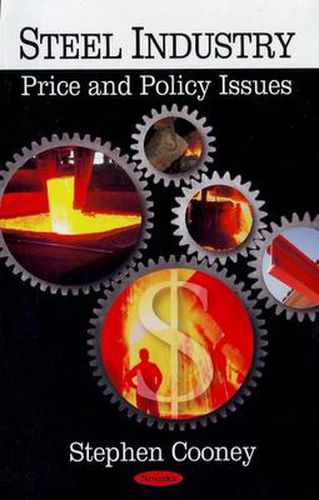Readings Newsletter
Become a Readings Member to make your shopping experience even easier.
Sign in or sign up for free!
You’re not far away from qualifying for FREE standard shipping within Australia
You’ve qualified for FREE standard shipping within Australia
The cart is loading…






Steel prices remain at historically elevated levels. The rapid growth of steel production and demand in China is widely considered as a major cause of the increases in both steel prices and the prices of steel-making inputs. Steel companies have achieved much greater pricing power, in part through an ongoing consolidation of the industry. Most of the integrated side of the industry, nearly half of U.S. production, is controlled by just two companies: U.S. Steel, the traditional industry leader, and Mittal Steel, itself the result of multiple international mergers. Moreover, Mittal in 2006 merged with the global number-two producer, Arcelor. Nucor and Gerdau have been active major consolidators of U.S. minimill production. U.S. steel production in 2005 was 104.6 million tons, a 5% decline from the high level of 2004. The net decline in output was mainly on the integrated side of the industry, which has continuously lost share. Imports also fell from the high level of 2004, although they rebounded by nearly 50% in early 2006. Input prices, especially ferrous scrap and iron ore, remain high and have contributed to higher production costs, which have been largely passed along to industrial consumers. The growth of China contributed to a large increase in demand for both steel and steel-making inputs. China has become both the world’s largest steel-maker and steel consumer. This new book presents the latest analyses on this critical industry.
$9.00 standard shipping within Australia
FREE standard shipping within Australia for orders over $100.00
Express & International shipping calculated at checkout
Steel prices remain at historically elevated levels. The rapid growth of steel production and demand in China is widely considered as a major cause of the increases in both steel prices and the prices of steel-making inputs. Steel companies have achieved much greater pricing power, in part through an ongoing consolidation of the industry. Most of the integrated side of the industry, nearly half of U.S. production, is controlled by just two companies: U.S. Steel, the traditional industry leader, and Mittal Steel, itself the result of multiple international mergers. Moreover, Mittal in 2006 merged with the global number-two producer, Arcelor. Nucor and Gerdau have been active major consolidators of U.S. minimill production. U.S. steel production in 2005 was 104.6 million tons, a 5% decline from the high level of 2004. The net decline in output was mainly on the integrated side of the industry, which has continuously lost share. Imports also fell from the high level of 2004, although they rebounded by nearly 50% in early 2006. Input prices, especially ferrous scrap and iron ore, remain high and have contributed to higher production costs, which have been largely passed along to industrial consumers. The growth of China contributed to a large increase in demand for both steel and steel-making inputs. China has become both the world’s largest steel-maker and steel consumer. This new book presents the latest analyses on this critical industry.